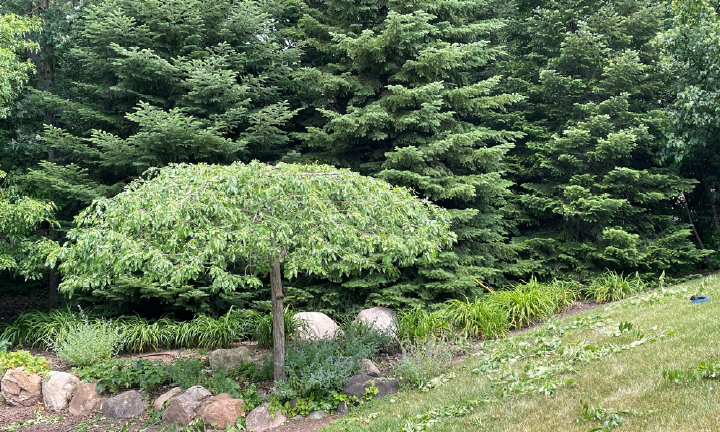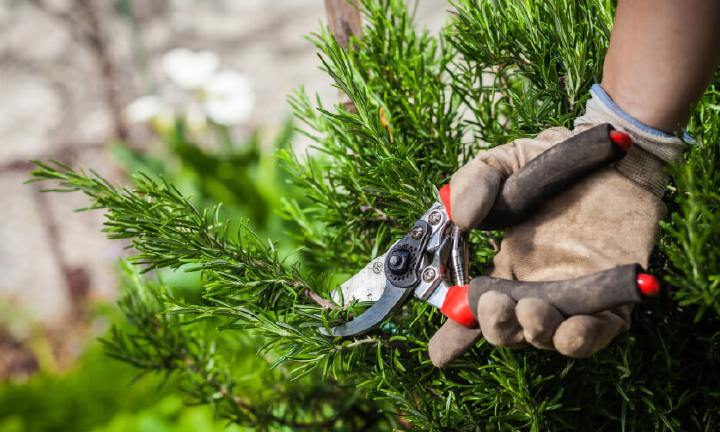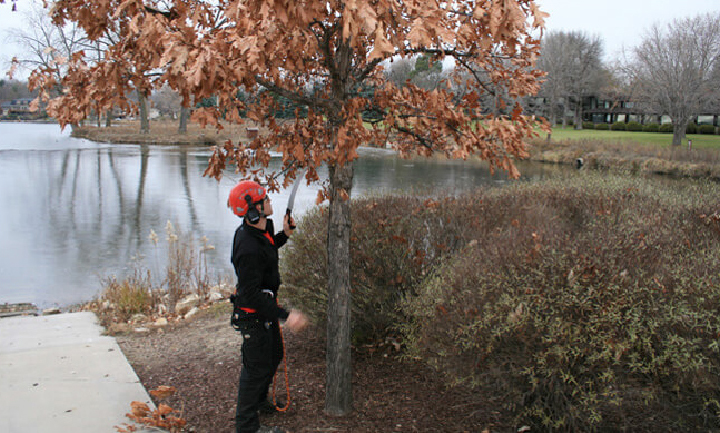


The primary objectives of mature tree pruning are to remove deadwood, maintain clearance from structures, and provide access for people and vehicles. The wounds created by the removal of large branches from mature trees take longer to seal and close-over than branches on younger trees.
Crown clean pruning is a national tree care standard that Vineland follows that includes the selective removal of dead, dying, diseased, or weak branches and waterspouts from a tree’s crown. As a tree matures, less live material should be removed from the canopy.

Planning when to prune is a critical factor for most shrubs to encourage flowering or reduce the likelihood of winter burn. Some cane growing shrubs do well when mature stems are thinned regularly, while others are best when removed every few years.
We prune tree form shrubs much like a tree: cut to a lateral branch and avoid topping. It’s best to avoid using a gas, electric, or manual shears by the practice of target pruning. If necessary to shear, we focus on cutting the new growth only.

Pruning a young tree is proactive maintenance for the future. Early structural pruning provides a solid framework to support the large branches of the tree when it matures.
We remove branches with weak attachments or branches that are on course to interfere with the growth of other branches within the canopy. It’s also done to redirect errant growth that could eventually obstruct sidewalks, roadways, buildings, or other plants.
Young trees are more tolerant of the removal of live tissue than mature trees. Pruning and training trees when young decreases chances of branch failure and the need to remove big branches in the future.
From questions to estimate requests, contact us about your residential or commercial project.